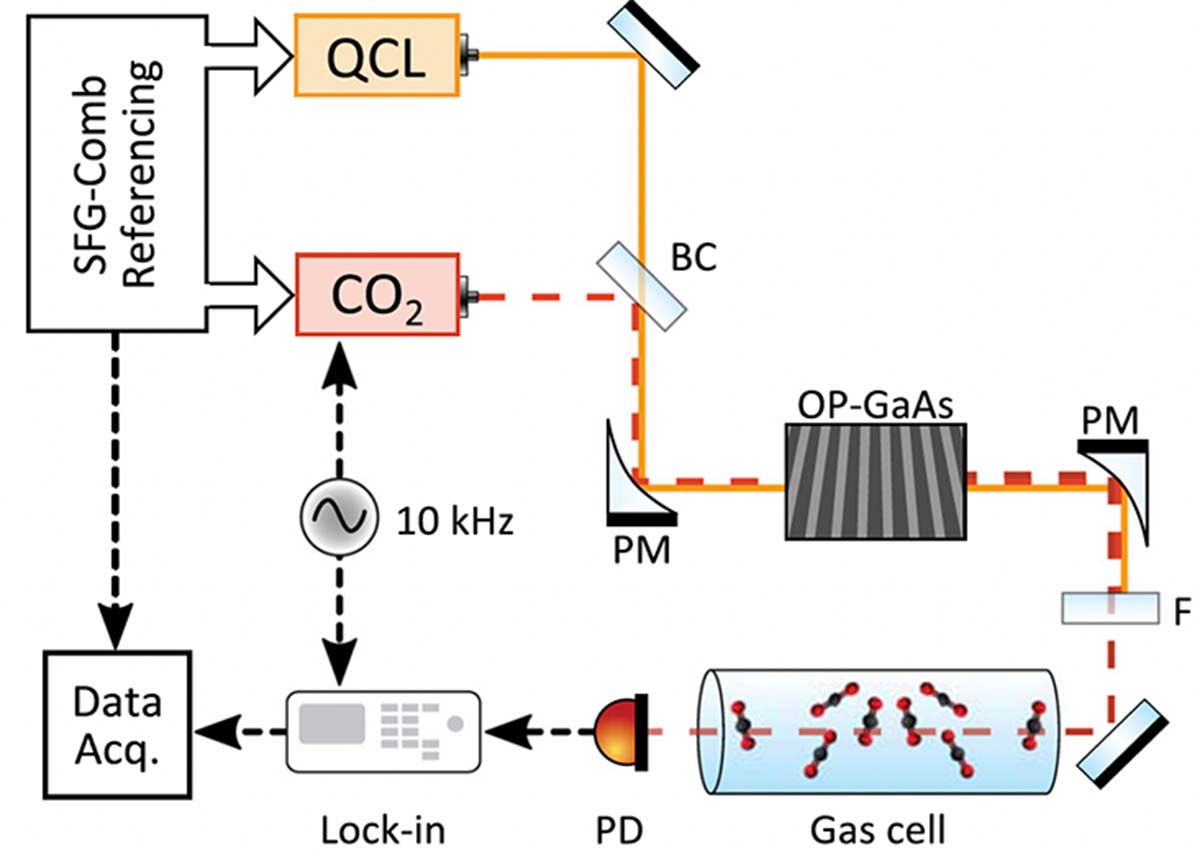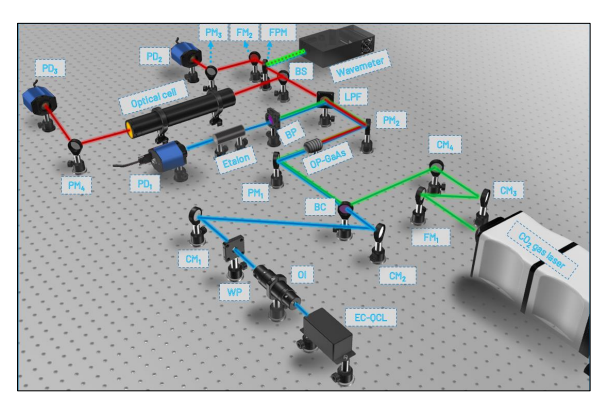

.png?sfvrsn=1b6bae1a_0) (FASTER)
(FASTER)-(1).png?sfvrsn=3a11a3b_0)
Our research at FASTER uses shock tubes to recreate high-temperature, high-pressure conditions found in combustion systems, utilizing IR and UV absorption diagnostics to study reaction rates and ignition characteristics. This allows us to optimize energy conversion, reduce emissions, develop alternative fuels, and enhance combustion safety and efficiency.
Our approaches to research in combustion science are multifaceted:
These approaches, combined with the laser diagnostics, time of flight mass spectrometer, machine learning, CFD and modeling techniques, provide a comprehensive overview of the combustion reactions and processes.

Commercially-available continuous-wave QCLs are not yet able to reach wavelengths beyond 13 μm. However, the 12 – 15 μm region has strong vibrational bands of many important molecules; particularly, this region contains the bending vibrational modes of aromatics. Therefore, we designed and developed our very own laser source to access the long-wavelength region of mid-IR. We employed non-linear spectroscopy, i.e., difference-frequency-generation, between a CO2 gas laser and an external-cavity QCL to generate laser light in the target region. Our work resulted in a US patent filing (Shakfa et al., US Patent Application 2021), a laser development paper in a leading Nature journal (Lamperti et al., Communication Physics 2020) and a chemical kinetics application paper for benzene detection (Shakfa et al., PROCI 2021). This is a highly unique and powerful laser source, and we are going to apply it for many interesting studies of chemical kinetics and environmental monitoring.

COSMOS lab - COmb assiSted MOlecular Spectroscopy laboratory
Politecnico di Milano - polimi

Commercially-available continuous-wave QCLs are not yet able to reach wavelengths beyond 13 μm. However, the 12 – 15 μm region has strong vibrational bands of many important molecules; particularly, this region contains the bending vibrational modes of aromatics. Therefore, we designed and developed our very own laser source to access the long-wavelength region of mid-IR. We employed non-linear spectroscopy, i.e., difference-frequency-generation, between a CO2 gas laser and an external-cavity QCL to generate laser light in the target region. Our work resulted in a US patent filing (Shakfa et al., US Patent Application 2021), a laser development paper in a leading Nature journal (Lamperti et al., Communication Physics 2020) and a chemical kinetics application paper for benzene detection (Shakfa et al., PROCI 2021). This is a highly unique and powerful laser source, and we are going to apply it for many interesting studies of chemical kinetics and environmental monitoring.

COSMOS lab - COmb assiSted MOlecular Spectroscopy laboratory
Politecnico di Milano - polimi